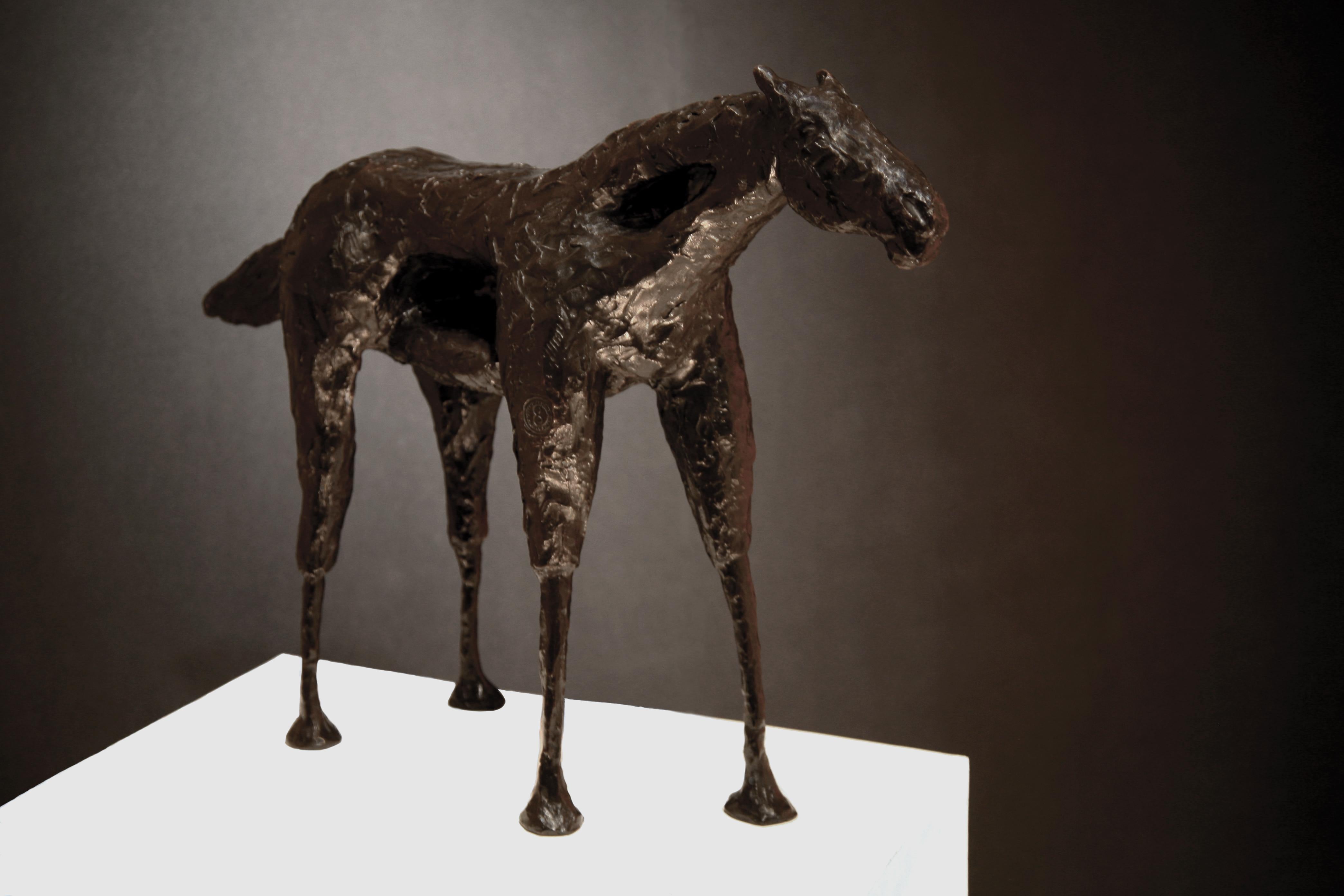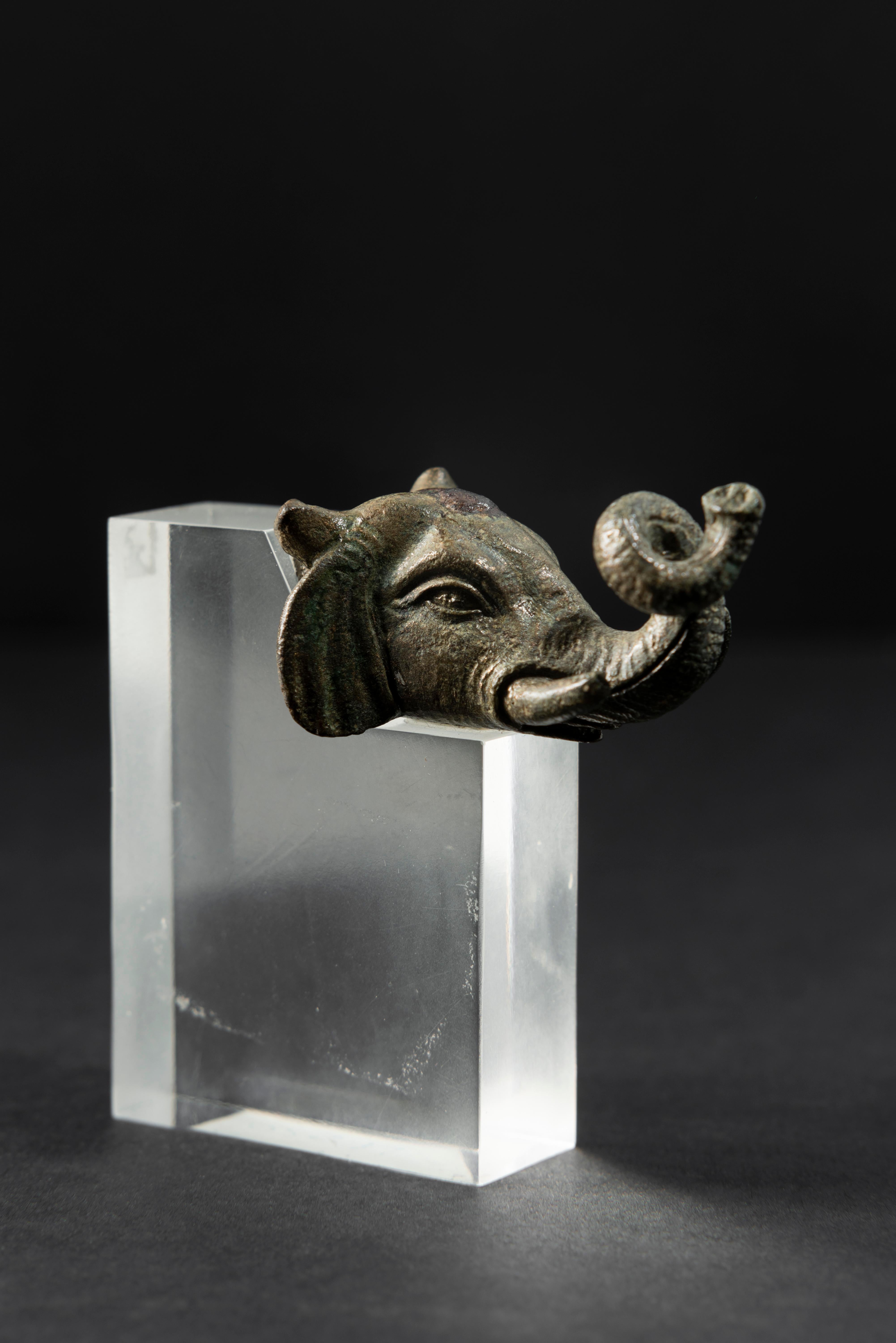Items Similar to Trois suricates roses
Want more images or videos?
Request additional images or videos from the seller
1 of 2
Mauro CordaTrois suricates roses
About the Item
Born in 1960 in Lourdes, France, Mauro Corda now works and lives in Paris. Son of a Sardinian bricklayer, he never forgot his roots and showed a great talent in drawing since he was very young. While his parents thought he was an unruly child with no skills, he was actually planning to attend the Beaux-Arts in Reims, having the strong feeling that art was his path. There, he learned about all those geniuses of the past like Donatello, Michelangelo and Luca della Robbia, as well as French sculptors like Coysevox, Houdon and Rodin. Between all the disciplines, he chose sculpture for his ability to draw and most of all for his familiarity with the material. This trait, in addition to his interest in the classical tradition, is vital in the development of his language. Indeed, the love of his youth was Michelangelo, who represented a mentor of special relevance to him: finding himself face-to-face with the great artist, he learned enough about himself to become who he is.
Corda abandoned the Beaux-Art in Reims and in 1981 applied to enter the Beaux-Art in Paris, winning the first price at the age of 21. He immediately had patrons queuing up and galleries which asked him to expose his works. It was in this period, working in Jean Cardot’s studio, that he started sculpting animals: has he says, his animals are clearly portraits, but often with a symbolical or mythical dimension. It was working in Casa Velasquez that Corda became interested in the representation of the male body and in androgyny. He feels like he is creating a dual personality, an ambiguous being that won’t ever be part of the community.
During the years, Corda has always remained faithful to the genre of portrait, the central theme of his work. It probes a specific moment in time, questioning all the doubts, fears and obligations surrounding it. Through his sculptures, the artist unveils the inner self of the human being in the most diverse roles, environments and situations, and in order to do it he plays with a wide range of materials. For his sculptures he employs resin, bronze, ceramic, cast iron, marble, terracotta and white bronze, a very rare technique used only by a few blacksmiths in Italy. Corda’s sculptures show his sensitivity for colors as well: he not only uses the most diverse patinas, but also applies chrome, silver, gilding and paint, to illuminate aspects of the artwork that needed to be emphasized. He refuses every kind of restraint, always trying to probe the limits of the body, both animal and human.
During the years, Corda has always remained faithful to the genre of portrait, the central theme of his work. It probes a specific moment in time, questioning all the doubts, fears and obligations surrounding it. Through his sculptures, the artist unveils the inner self of the human being in the most diverse roles, environments and situations, and in order to do it he plays with a wide range of materials. For his sculptures he employs resin, bronze, ceramic, cast iron, marble, terracotta and white bronze, a very rare technique used only by a few blacksmiths in Italy. Corda’s sculptures show his sensitivity for colors as well: he not only uses the most diverse patinas, but also applies chrome, silver, gilding and paint, to illuminate aspects of the artwork that needed to be emphasized. He refuses every kind of restraint, always trying to probe the limits of the body, both animal and human.
Combining his pure lines and harmonious curves inspired by the Italian Renaissance and his strong interest concerning the materials employed, he can be described as an artist who breaks the rules and shove our certainties. As they walk through his sculptures, the spectators experience a wide range of emotions: grotesque and sublime alternate and coexist as they observe nightmares, huge animals and contortionists succeeding one another. If at first the spectator feels oppressed and tense, these negative sensations are soon replaced by a smile and then by laugh. These conflicting emotions are the consequence of the impeccable technique of Mauro Corda and the incongruous situations that he creates.
Mauro Corda never stops talking to us about ourselves. He shows us the cruelty and the violence which belong to the human being and his duality between good and bad. Sufferance is the inevitable feeling that haunts men for all their lives and that makes them miserable, but at the same time is necessary, even fascinating. Corda’s works lead the human being to a catharsis: they hit us with strength, showing us the deepest and most intimate traumas, instincts and passions. Only in this way we can face ours
- Creator:Mauro Corda (1960, French)
- Dimensions:Height: 14.57 in (37 cm)Width: 7.09 in (18 cm)Depth: 6.3 in (16 cm)
- Medium:
- Period:
- Condition:
- Gallery Location:PARIS, FR
- Reference Number:1stDibs: LU2506213551532
About the Seller
No Reviews Yet
Vetted Seller
These experienced sellers undergo a comprehensive evaluation by our team of in-house experts.
1stDibs seller since 2023
Typical response time: 10 hours
- ShippingRetrieving quote...Ships From: PARIS, France
- Return PolicyA return for this item may be initiated within 14 days of delivery.
More From This SellerView All
- HarrietLocated in PARIS, FRBorn december 19 1958, De Keyzer studied at the Koninklijke Academie voor Schone Kunsten, Eeklo, lead by professional sculptor Leo De Buysere. In a time and environment where creati...Category
2010s Figurative Sculptures
MaterialsBronze
- Mara & AraLocated in PARIS, FRBorn december 19 1958, De Keyzer studied at the Koninklijke Academie voor Schone Kunsten, Eeklo, lead by professional sculptor Leo De Buysere. In a time and environment where creati...Category
2010s Figurative Sculptures
MaterialsBronze
- Nymphe des boisLocated in PARIS, FRBorn december 19 1958, De Keyzer studied at the Koninklijke Academie voor Schone Kunsten, Eeklo, lead by professional sculptor Leo De Buysere. In a time and environment where creati...Category
2010s Figurative Sculptures
MaterialsBronze
- Don QuixoteLocated in PARIS, FRFabbri was born in Quarrata (Tuscany). At the age of 12, he attended the Scuola d'Arte in Pistoia and then, under the instruction of the painter Fabio Casanova, he decided to embark on an artistic career and created his first sculptures, mainly using the wax and plaster. In 1932 Fabbri, in order to continue his education at the Accademia di Belle Arti, moved to Florence where he frequented the artists' Caffè Giubbe Rosse, meeting point for the intellectuals known as the Ermetici Group (Eugenio Montale, Carlo Bo, etc.) and also came into contact with the painter Ottone Rosai and the poet Mario Luzi. At the end of the year he moved to Albisola (Savona), where he worked in the La Fiamma...Category
1970s Figurative Sculptures
MaterialsBronze
- Taureau edition 2/8Located in PARIS, FRSculptor Alfred Basbous (1924 - 2006) was born in Rachana, Lebanon. His works express a lifelong exploration of the human form and its abstract properties. Throughout his life, Basb...Category
2010s Figurative Sculptures
MaterialsBronze
- UntitledLocated in PARIS, FRSculptor Alfred Basbous (1924 - 2006) was born in Rachana, Lebanon. His works express a lifelong exploration of the human form and its abstract properties. Throughout his life, Basb...Category
1990s Figurative Sculptures
MaterialsBronze
You May Also Like
- Caballo Arroyo (Bronze horse sculpture by Frank Arnold)By Frank ArnoldLocated in Fresno, CAFrank Arnold is thought by many to be one of the foremost abstract figurative painters and sculptors of our time. He is a living master whose work is considered to be both personal a...Category
21st Century and Contemporary Abstract Figurative Sculptures
MaterialsBronze
- NeuvoaBy Frank ArnoldLocated in Fresno, CAFrank Arnold is thought by many to be one of the foremost abstract figurative painters and sculptors of our time. He is a living master whose work is considered to be both personal a...Category
21st Century and Contemporary Abstract Abstract Sculptures
MaterialsBronze
- Daniel Kafri, "Family", 1989, bronze sculpture, 27x17x19 cmLocated in Jerusalem, ILDani Kafri "Family", 1989 Bronze 27x17x19 cm On the last day of WW2, in Czechoslovakia – 1945, Daniel Kafri was born on the brink between mankind’s darkes...Category
1990s Figurative Sculptures
MaterialsBronze
- ANCIENT BRONZE HEAD OF AN ELEPHANT, ROMAN EMPIRE 2ND CENTURY ADLocated in Milan, ITThis beautiful cast bronze elephant head is a protome, which in ancient art was a decorative element consisting of a head - sometimes with part of the bust - of a human, animal, or f...Category
15th Century and Earlier Figurative Sculptures
MaterialsBronze
- ANCIENT ROMAN BRONZE FIGURE OF WINGED EROS RIDING A DOLPHIN, 2ND CENTURY ADLocated in Milan, ITBronze figure of a young Eros, caught in the pose of riding a dolphin. Attractive green patina, some fingers and right foot are broken. Separately worked left wing is missing. Right ...Category
15th Century and Earlier Figurative Sculptures
MaterialsBronze
- 16th Century Venetian bronze sculpture of a Young Man in ArmourLocated in Milan, IT16th Century Venetian bronze sculpture of a Young Man in Armour attributed to the Florentine artist Andrea di Alessandri, called Il Bresciano (Fl...Category
16th Century Figurative Sculptures
MaterialsBronze




